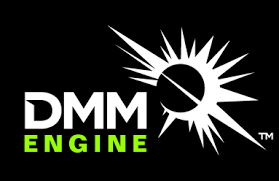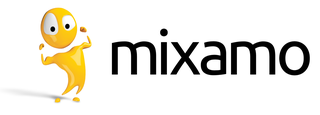
Autodesk Maya, commonly shortened to just Maya, is a 3D computer graphics application that runs on Windows, macOS and Linux, originally developed by Alias Systems Corporation and currently owned and developed by Autodesk. It is used to create assets for interactive 3D applications, animated films, TV series, and visual effects.
Autodesk, Inc. is an American multinational software corporation that makes software products and services for the architecture, engineering, construction, manufacturing, media, education, and entertainment industries. Autodesk is headquartered in San Rafael, California, and features a gallery of its customers' work in its San Francisco building. The company has offices worldwide. Its U.S. locations are California, Oregon, Colorado, Texas, Michigan, New Hampshire and Massachusetts. Its Canada offices are located in Ontario, Quebec, and Alberta.
Autodesk 3ds Max, formerly 3D Studio and 3D Studio Max, is a professional 3D computer graphics program for making 3D animations, models, games and images. It is developed and produced by Autodesk Media and Entertainment. It has modeling capabilities and a flexible plugin architecture and must be used on the Microsoft Windows platform. It is frequently used by video game developers, many TV commercial studios, and architectural visualization studios. It is also used for movie effects and movie pre-visualization. For its modeling and animation tools, the latest version of 3ds Max also features shaders, dynamic simulation, particle systems, radiosity, normal map creation and rendering, global illumination, a customizable user interface, new icons, and its own scripting language.
Visual effects is the process by which imagery is created or manipulated outside the context of a live action shot in filmmaking. The integration of live action footage and CG elements to create realistic imagery is called VFX.
MASSIVE is a high-end computer animation and artificial intelligence software package used for generating crowd-related visual effects for film and television.
A technical director (TD) is usually a senior technical person within e.g. a software company, engineering firm, film studio, theatre company or television studio. This person usually has the highest level of skill within a specific technical field.
The Maya Embedded Language (MEL) is a scripting language used to simplify tasks in Autodesk's 3D Graphics Software Maya. Most tasks that can be achieved through Maya's GUI can be achieved with MEL, as well as certain tasks that are not available from the GUI. MEL offers a method of speeding up complicated or repetitive tasks, as well as allowing users to redistribute a specific set of commands to others that may find it useful.

Autodesk Softimage, or simply Softimage is a discontinued 3D computer graphics application, for producing 3D computer graphics, 3D modeling, and computer animation. Now owned by Autodesk and formerly titled Softimage|XSI, the software has been predominantly used in the film, video game, and advertising industries for creating computer generated characters, objects, and environments.
Computer facial animation is primarily an area of computer graphics that encapsulates methods and techniques for generating and animating images or models of a character face. The character can be a human, a humanoid, an animal, a legendary creature or character, etc. Due to its subject and output type, it is also related to many other scientific and artistic fields from psychology to traditional animation. The importance of human faces in verbal and non-verbal communication and advances in computer graphics hardware and software have caused considerable scientific, technological, and artistic interests in computer facial animation.

Virtual cinematography is the set of cinematographic techniques performed in a computer graphics environment. It includes a wide variety of subjects like photographing real objects, often with stereo or multi-camera setup, for the purpose of recreating them as three-dimensional objects and algorithms for the automated creation of real and simulated camera angles. Virtual cinematography can be used to shoot scenes from otherwise impossible camera angles, create the photography of animated films, and manipulate the appearance of computer-generated effects.

ZBrush is a digital sculpting tool that combines 3D/2.5D modeling, texturing and painting. It uses a proprietary "pixol" technology which stores lighting, color, material, orientation, and depth information for the points making up all objects on the screen. The main difference between ZBrush and more traditional modeling packages is that it is more akin to traditional sculpting.
The Jack human simulation system was developed at the Center for Human Modeling and Simulation at the University of Pennsylvania in the 1980s & 1990s under the direction of Professor Norman Badler. Conceived as an ergonomic assessment and virtual human prototyping system for NASA space shuttle development, it soon gathered funding from the U.S. Navy and U.S. Army for dismounted soldier simulation, from the U.S. Air Force for maintenance simulation, and from various other government and corporate users for their own applications. In 1996 the software was spun off into a privately held company and is now sold as an ergonomic human simulation toolkit by Siemens. The research and development of the Jack system have led to such standards as H-anim and MPEG4 Body Animation Parameters.

Digital Molecular Matter, better known as simply DMM, is a proprietary middleware physics engine developed by Pixelux for generating realistic destruction and deformation effects. The offline version can support high-resolution simulations for use in movie special effects. The real-time version is designed for computer, video games, and other simulation needs by attempting to simulate physical real-world systems. Unlike traditional realtime simulation engines, which tend to be based on rigid body kinematics, the use of finite element analysis (FEA) allows DMM to simulate a large set of physical properties. Developers can assign physical properties to a given object or portion of an object, which allow the object to behave as it would in the real world. In addition, the properties of objects or parts of objects can be changed at runtime, allowing for additional interesting effects.
MotionBuilder is a 3D character animation software produced by Autodesk. It is used for virtual cinematography, motion capture, and traditional keyframe animation. It was originally named Filmbox when it was first created by Canadian company Kaydara, later acquired by Alias and renamed to MotionBuilder. Alias in turn was acquired by Autodesk.
Messiah is a 3D animation and rendering application developed by pmG Worldwide. It runs on the Win32 and Win64 platforms. It is marketed to run on Mac OS X and Linux via Wine. Messiah's fourth version, messiah:studio was released April 2009 and version 5.5b as messiah:animate was released November 2006. messiahStudio6 was released in April 2013. Messiah seems no longer maintained since 2013 (abandoned).
iClone is a real-time 3D animation and rendering software program. Real-time playback is enabled by using a 3D videogame engine for instant on-screen rendering.

Duncan Brinsmead is a Canadian software programmer and developer of simulations of natural environments in 3D computer graphics (CGI). He created the Maya Paint Effects for digitally painting instances like plants or hair in a virtual 3D environment. In 2008, together with Jos Stam, Julia Pakalns and Martin Werner he received an Academy Award for Technical Achievement for the design and implementation of the Maya Fluid Effects system. Fluid Effects are based on the simulation of fluid mechanics in software and used for simulating natural phenomena such as fog, steam or smoke.

Mixamo is a 3D computer graphics technology company. Based in San Francisco, the company develops and sells web-based services for 3D character animation. Mixamo's technologies use machine learning methods to automate the steps of the character animation process, including 3D modeling to rigging and 3D animation.
Jason Schleifer is an American animator, character technical director, and entrepreneur. Schleifer started his career at Alias/Wavefront where he was a product specialist during the development of Maya. His technical expertise in character rigging led him to work as a character technical director and eventually animation lead at Weta Digital where he helped create and animate the character, Gollum for the Lord of the Rings trilogy. In 2003 Schleifer moved back to the U.S. to work at PDI/DreamWorks in Redwood City, CA where he became Head of Character Animation and worked on feature films including Madagascar, Over the Hedge, Megamind, and Mr. Peabody & Sherman.





